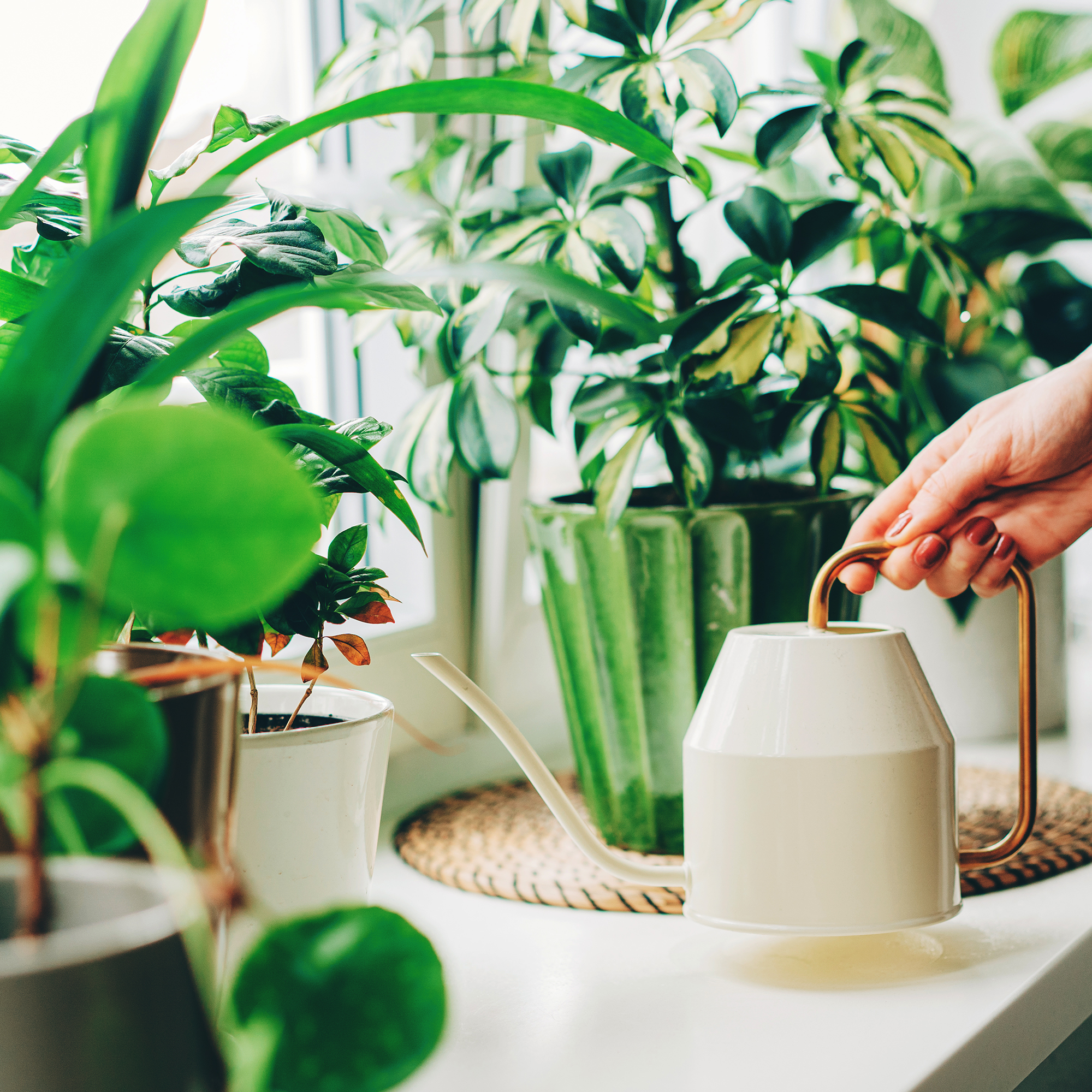How To Propagate A Christmas Cactus The Easy Way: Make More Plants & Share The Joy
Learn how to grow more Christmas cacti for free by planting root cuttings. These stunning flowering plants make excellent gifts over the holidays and beyond.

I always look forward to the blooming of my Christmas cactus (Schlumbergera x buckleyi). Reliably, it starts to get tiny hot pink buds on the tips of the scalloped leaves every December. By holiday time or early January, it is coated in brightly exotic flowers. Visitors to my home often ask about the plant, so I quickly learned how to propagate Christmas cactus to make gifts for friends and loved ones.
Much like other succulents, rooting cuttings is the quickest way to propagate Christmas cactus. This is a very reliable way to make new plants and costs next to nothing – just some pots and potting mix. By following a simple Christmas cactus care routine, these new plants will soon turn into flowering beauties with lifespans of a century or more.
If you have one of the other types of types of holiday cactus then you can follow this advice for those plants, as propagating a Thanksgiving cactus or Easter cactus is broadly similar. Although Easter cactus care can be a little more challenging, so it's good to know what you're working with.
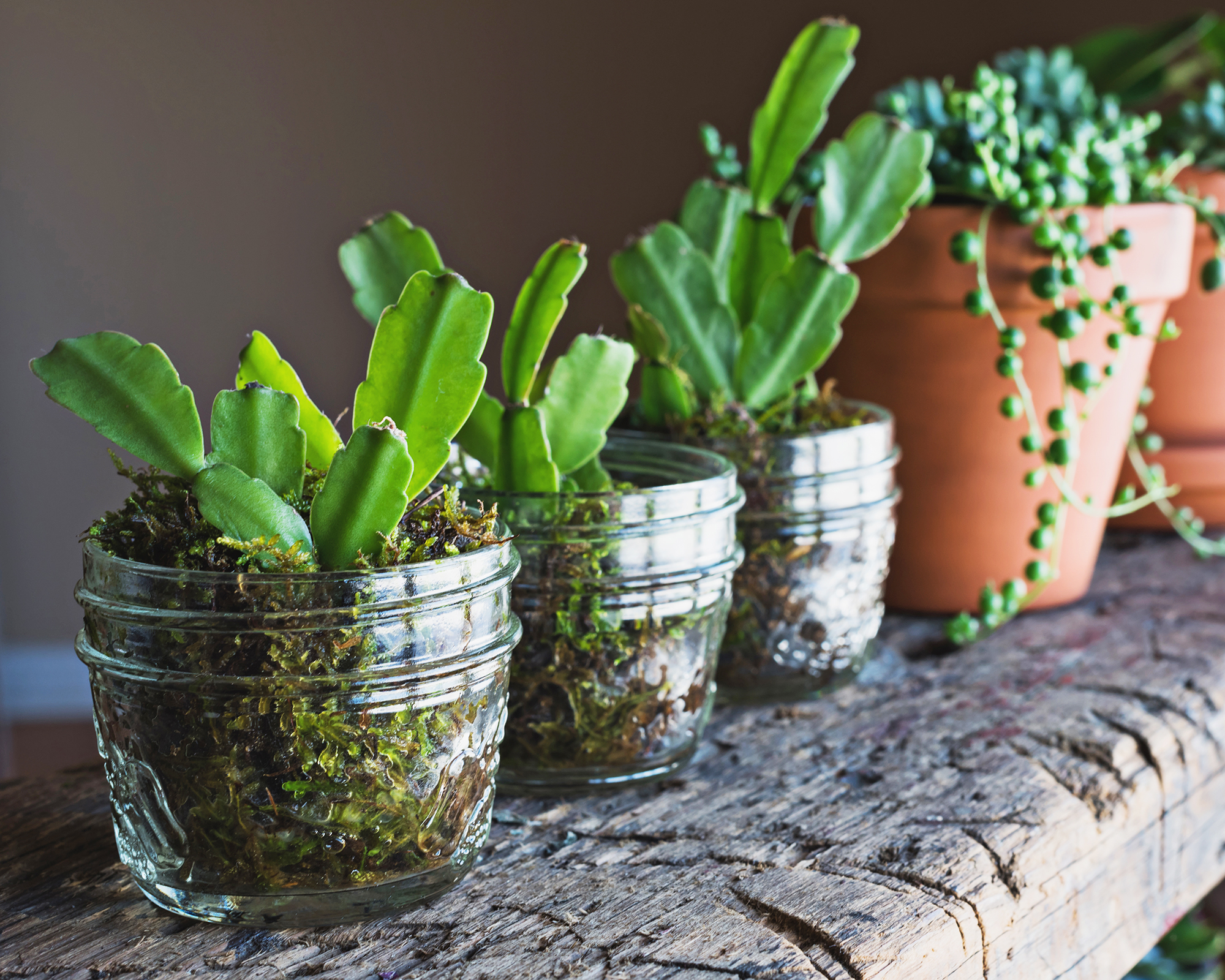
Best Time to Propagate Christmas Cactus
The optimal time to propagate a Christmas cactus from cuttings is in late spring to early summer, after all the flowers are spent and have dropped off. The plant will be back to actively growing by this time, and stems are ready to be taken. However, if you missed this window and just can't wait, then it's fine to attempt propagation later in the year.
Late spring is also the best time for repotting a Christmas cactus, as the plant will have a chance to settle into its new pot before the holidays.
How to Propagate Christmas Cactus – Step By Step
Propagating Christmas cactus through stem cuttings inserted into potting mix is the most successful method, as outlined below. However, root division is an option for large, established plants.
You may also try rooting cuttings in water, although this option is far less reliable and can cause fungal issues. Also, using the municipal water supply exposes the cutting to a variety of chemicals and minerals that may disrupt rooting. If you do want to try this option, change the water frequently and watch for roots.
Sign up for the Gardening Know How newsletter today and receive a free copy of our e-book "How to Grow Delicious Tomatoes".
The plant must be healthy before taking cuttings. Avoid stems with any disease or dead spots. The exception to this is if you are trying to save a plant suffering from common Christmas cactus problems. In this instance, isolate the cuttings from other plants until you are sure they are healthy and disease-free.
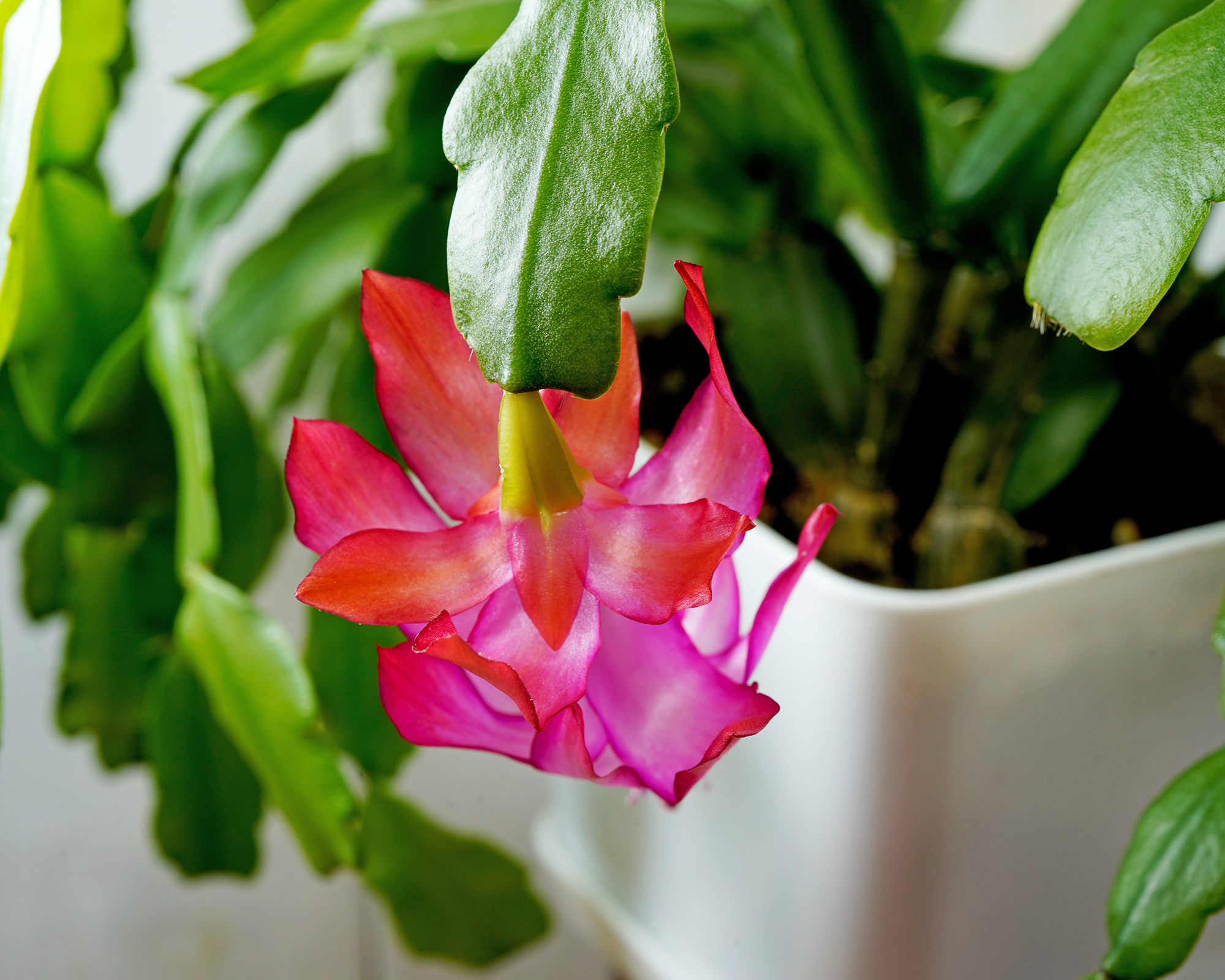
1. Take Cuttings
Christmas cactus propagation usually begins by simply taking a short, Y-shaped cutting. Choose a stem with new growth for best results. The cutting should consist of 2-5 joined segments.
It's important to remove the section at a joint. This will encourage the plant to branch at that point, so it won’t damage the plant but will promote further growth.
To remove the plant material, either use a sterile, sharp knife or twist and pull upward at a 180-degree angle.
2. Let Cuttings Callus Over
Succulent plant cuttings should always be allowed to callus prior to planting. This just means leaving the section out overnight to dry at the cut end. Failure to do this can result in rotting and no root production.
If you wish, you can sterilize the section by dipping it into diluted bleach followed by a good rinse in clean water. Let the section dry out overnight or for 24 hours. The cutting can be stored for up to 3 months in high humidity and cool temperatures of around 50°F (10°C).
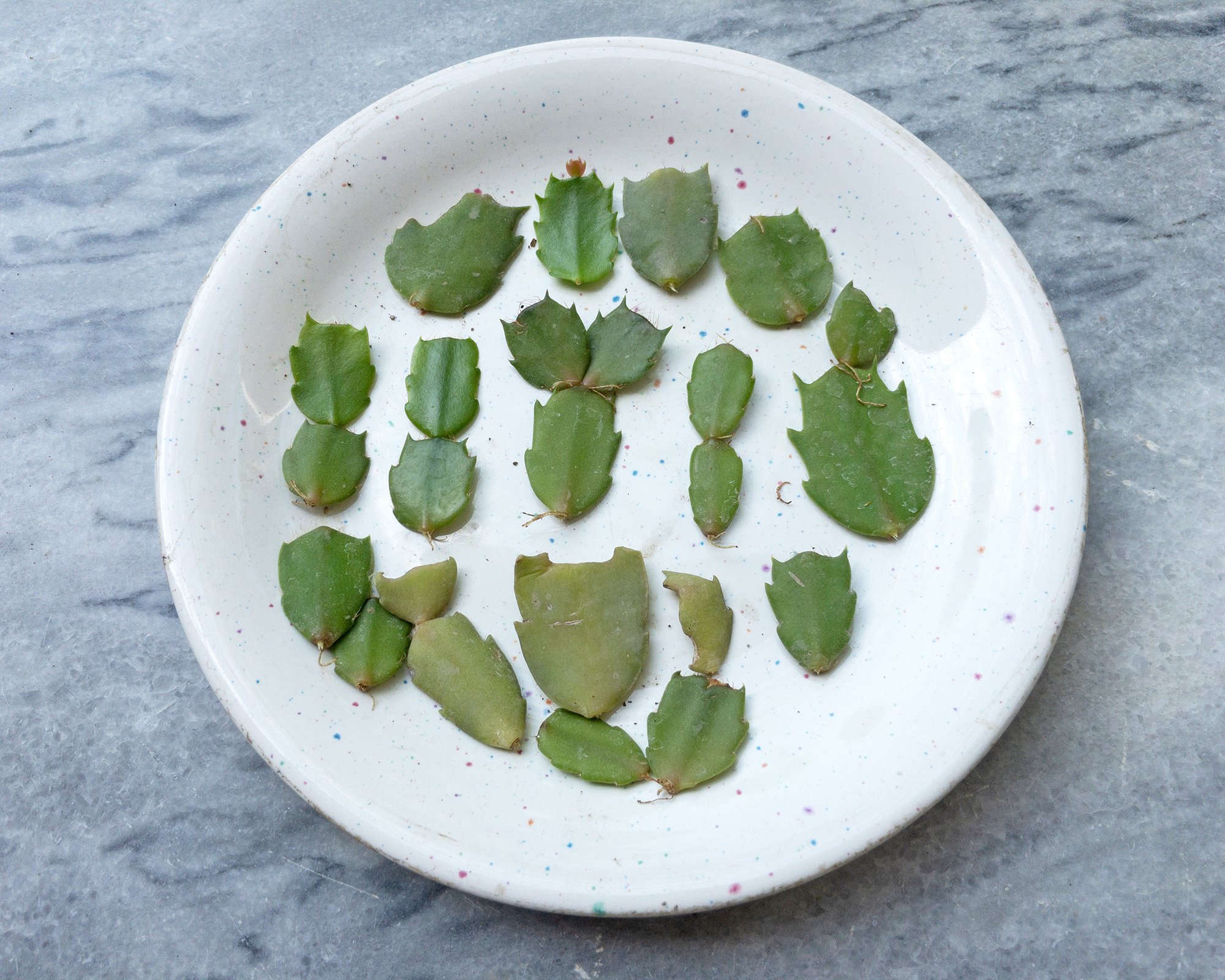
3. Plant Christmas Cactus Cuttings
After the cutting has had a chance to dry, prepare a planting medium. The ideal Christmas cactus soil contains potting soil as well as materials to aid drainage, such as sand, perlite, or vermiculite. We recommend this Back to the Roots 100% Organic Succulent & Cacti Mix, available on Amazon. Moisten the potting mix and drain thoroughly.
Make a hole in the potting mix and insert the cut end 1 inch (2.5cm) deep, then gently push the soil around the cutting.
Some growers claim dipping the cut end into rooting hormone before planting will enhance rooting, but it isn't strictly necessary.
4. Care For Cuttings
Place the container in a brightly lit area, avoiding direct sunlight. Temperatures should be between 70-75°F (21-24°C). Cover the container with a clear, plastic bag to make a little greenhouse, or consider a pop up greenhouse or mini greenhouse, both available on Amazon. Remove the bag daily to let excess moisture evaporate and prevent fungal issues.
Water the cutting sparingly at first to prevent rotting. Keep the soil lightly moist but not soggy.
5. Transplant Cuttings
After about three weeks, check to see if the cutting has rooted. Use a pencil, skewer, or other slender object to excavate gently at the base of the cutting. The cutting should also start showing signs of growth at the tips of its leaves, which are usually reddish in color.
Once the roots are about 1 inch (2.5cm) long, plant the cuttings in a larger container, and begin watering with diluted houseplant food. This this organic succulent & cactus plant food from Amazon is a great option. Keep the young plants in a bright location where temperatures are warm.
The cutting may wilt some in the beginning, but this is normal and will eventually subside once the plant has taken to its new environment.
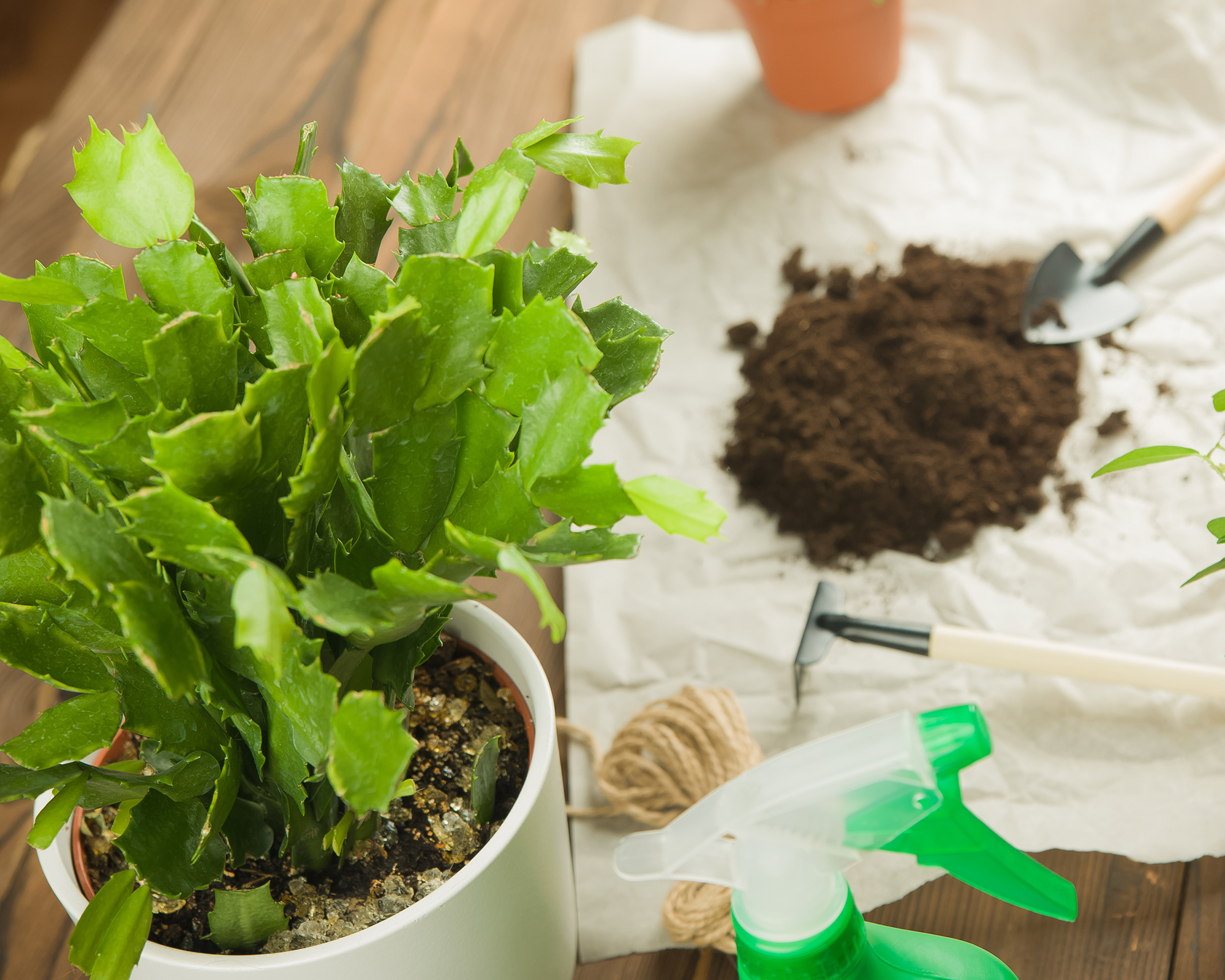
Caring for Young Christmas Cactus Plants
It will take a year or two for your plants to mature before you will see your Christmas cactus bloom. In the meantime, you need to take care of the young succulents to help them become established.
While Christmas cactus can adapt to and be grown in low light, the plant will produce more blooms with brighter light conditions. However, stay away from direct sunlight, which may burn the leaves.
Christmas cactus watering is a delicate balance as plants must never be overwatered, but also not allowed to dry out completely. Check the soil regularly and only water once the top inch (2.5cm) has dried out. Make sure there is adequate drainage provided to prevent the plant from Christmas cactus root rot. Consider buying a moisture meter, like this simple one from Amazon, to monitor the moisture level of your soil.
The plants also enjoy average to high humidity levels with ideal Christmas cactus temperatures hovering between 60 and 75°F (15-24°C) in the summer and 55 to 70°F (12-21°C) in the cooler months. Placing the pot on a tray of pebbles and water can raise humidity for houseplants where the air is dry. You can get a humidity tray along with a variety of pebbles in all different colors from Amazon.
Feed plants every other week between spring and summer. The ideal Christmas cactus fertilizer is a balanced houseplant fertilizer diluted to half-strength. This organic succulent & cactus plant food from Amazon is a great option.
At the end of summer, stop fertilizing and reduce watering to help encourage blooms. The plant will need long, dark nights in the 8 weeks or so leading up to flowering. Move the plant to a room where it will be in darkness for 13-14 hours each night.

Bonnie Grant is a professional landscaper with a Certification in Urban Gardening. She has been gardening and writing for 15 years. A former professional chef, she has a passion for edible landscaping.
- Melanie GriffithsEditor in Chief
- Amy DraissDigital Community Manager
